A Delicious Guide to Ios
Your summer map to Ios: what...
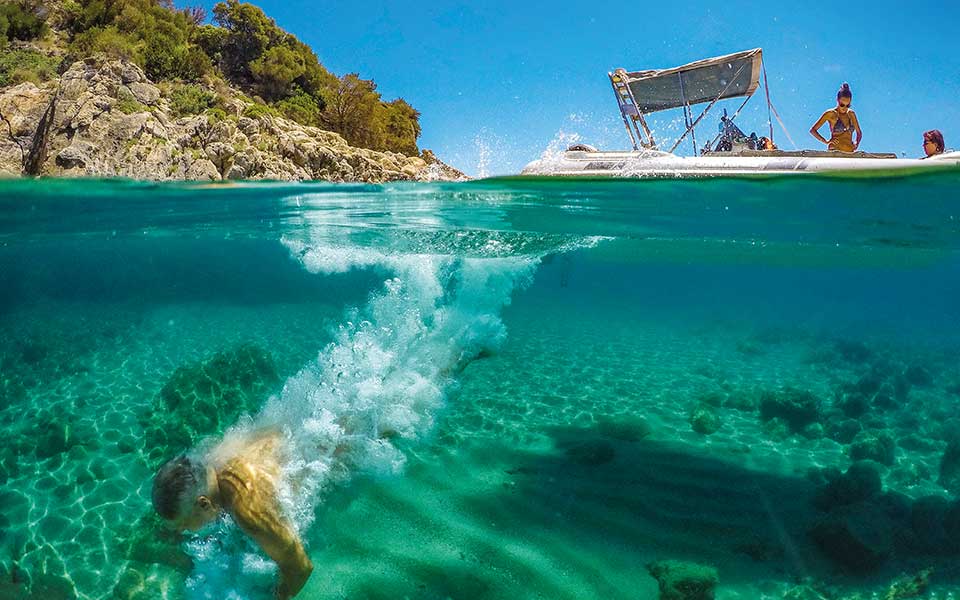
A refreshing dip in the chilly emerald waters of Makria Pounda Beach.
© Nikos Chatziiakovou
It isn’t easy to introduce your own homeland as a travel destination, trying to see it from a visitor’s perspective.
“Like love, a journey expresses an attempt to transform dream into reality,” says the Swiss-British philosopher Alain de Botton.
How then can I describe Samos and still ensure that love does not add its own artistic touches of dreaminess, perhaps even of illusion, to the real thing?
How can I speak, for instance, about its vineyards and its wines without bringing up my own grandmother?
Every August she used to prepare the necessary accessories for the harvest: a wicker basket, a billhook pruning knife called a katsouni, straw hats and white headscarves to protect us from the blistering sun, sheets of thick tarpaulin where we could set down the plump bunches of grapes until they were picked up and taken to the wine press of the Union of Winemaking Cooperatives of Samos over in Malagari.
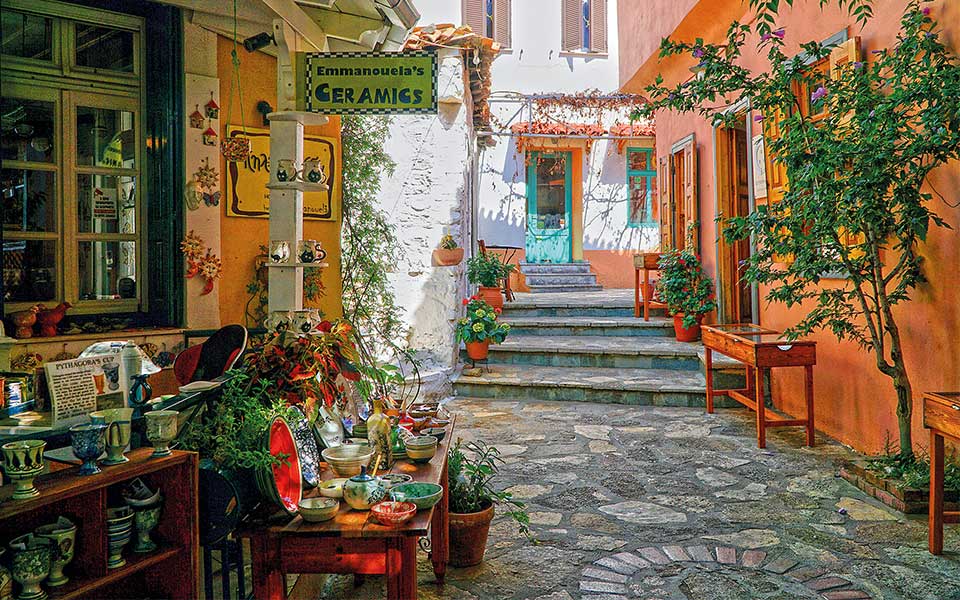
The chapel of Panaghia Makrini, on the western side of Kerki, the tallest mountain on the island.
© Getty Images/Ideal Image
What can I write about the stone-paved waterfront at Vathy, which bustled every Saturday night – the locals wryly call this parade of people the “nyfopazaro” or “bride bazaar” – while we sat and watched all the comings and goings from a table at one of the pastry shops in the square with the lion statue?
Or about the deeply moving ruins of once-prosperous Karlovasi – the half-derelict mansions and the immense abandoned tanneries – or the seaside promenade there, where, as a young teenager, I used to see the poet Yiannis Ritsos now and then on his afternoon strolls, sporting a white linen suit and a straw hat?
No matter what I might write about the island I’ve seen and experienced, it will inevitably be colored by the memories of my childhood and adolescence.
So it might be better if I were to say nothing (or very little) about the Samos I’ve enjoyed to my heart’s content, and focus instead on the Samos I long for.
Because there are still parts of the island that remain a mystery to me, and others that, for a number of reasons, I only got to know inadequately and in haste, and that I would now like to know better and enjoy more, deciphering them properly.
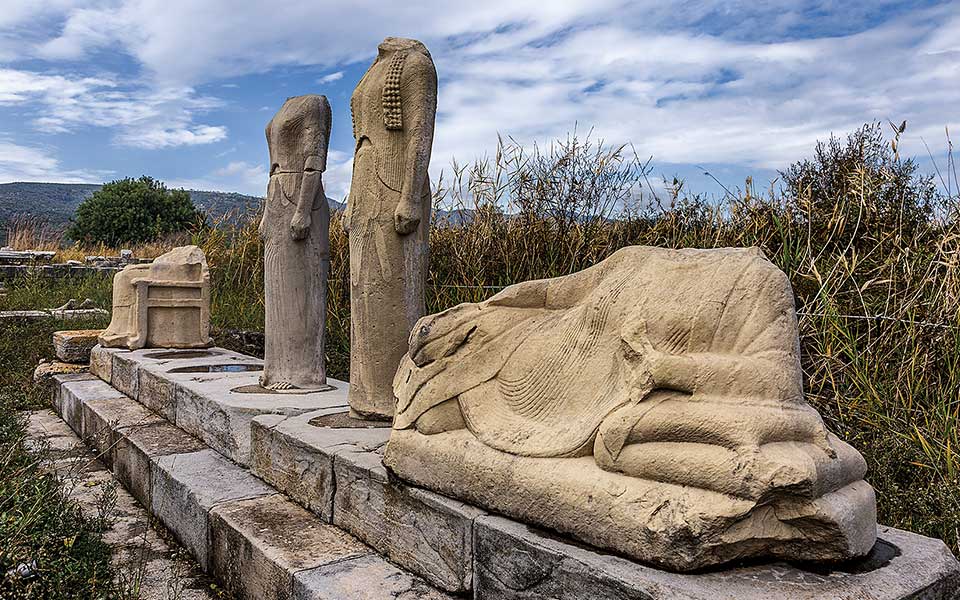
According to Herodotus, the Heraion of Samos, a sanctuary of the goddess Hera dating to the 6th c. BC, was once the largest temple in all of Greece.
© Perikles Merakos
I want to see the view from Psili Vigla towards the shores of Asia Minor from the plateau just outside the Monastery of Zoodohos Pigi, under the towering pine trees.
I want to go to Aghios Isidoros, a tiny bay at the western end of the island, once home to no fewer than five shipyards employing eighty shipwrights.
Few of these craftsmen are left today to keep alive an industry that has existed on the island for over a century.
I’ll ask them to tell me how they feel when they hear the command: “fora volta,” when the supporting wedge that acts as a brake for a newly-built boat on the slipway is removed, and the vessel leaves dry land and slides into the water.
I’ll ask them about that moment when the vessel and its master craftsmen are forever separated.
I want to go back inside the Eupalinian Tunnel, the middle section of the 6th-century BC aqueduct commissioned by the tyrant Polycrates and designed by Eupalinos, an architect and engineer from Megara, for the ancient city of Samos, today called Pythagoreion.
I want to get my shoes muddy, and feel the water that drips from certain parts of the roof. I want to walk over trenches perhaps ten meters deep, to run my hands along the rock face carved so many centuries ago.
A visit to the tunnel is a unique experience, made up of all of this.
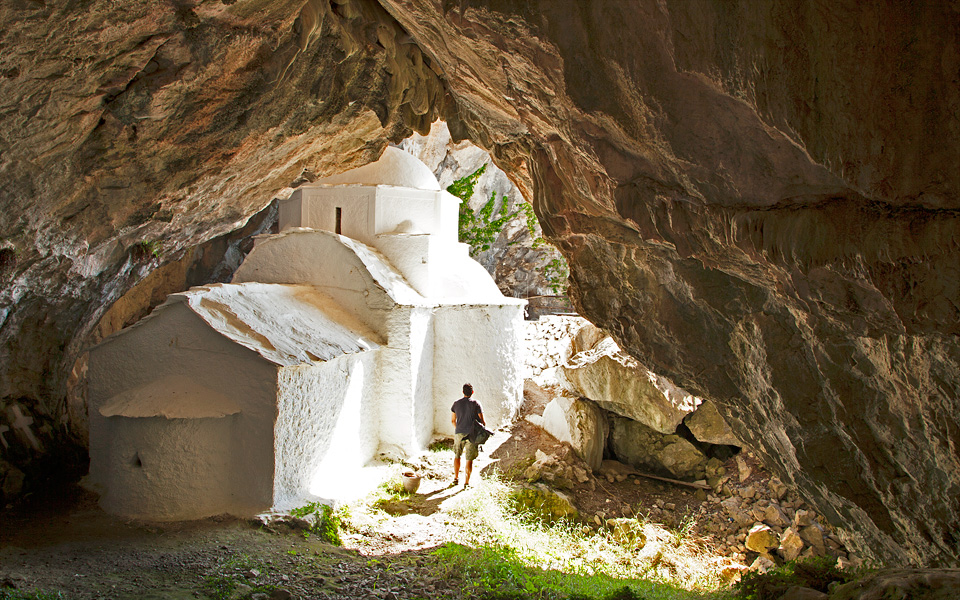
The workshop of Emanouela Makri, a fourth generation ceramicist in the village of Manolates.
© Olga Charami
I want to spend an afternoon walking through the dry grass that grows at the Temple of Hera, one of the largest temples in ancient Greece, a site that remained sacred from the Geometric Period to Roman times.
Of its original 155 Ionic columns, only one still stands in place today.
I want to see the most beautiful beach (the beach of Megalo Seitani), the most remote village (the village of Drakaioi), and the most beautiful seaside forest of Samos, all by following an 8.7 km hiking trail, one of the many such paths established by Stefanos Psimenos and his colleagues at terrainmaps.gr.
I want to go into the workshop of the ceramicist Emmanuela Macri in the village of Manolates and watch as she casts her spell over the clay, just as her great-grandfather and her grandfather once did, and as her grandmother, her mother and her aunt still do.
Then I’ll drop in at one of the village’s little tavernas and have a glass of sekaki (the local name for the white dry wine SAIMANaki, produced by the Union of Winemaking Cooperatives of Samos) while nibbling on traditional chickpea fritters, stuffed onions, savory cheese dumplings known as katoumaria, and paspalas, cured pork flavored with savory – in short, wine meze that have no equal.
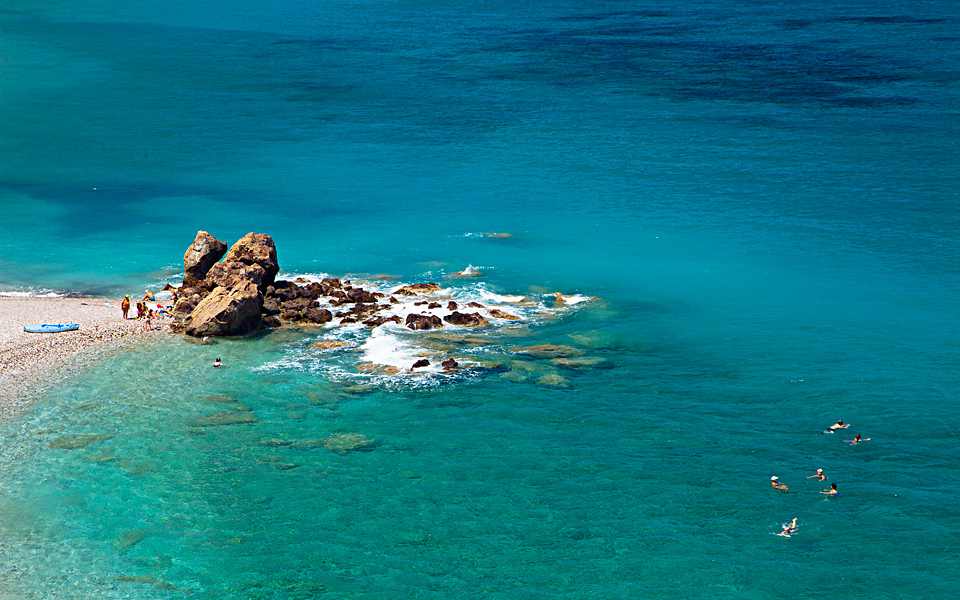
Potami ranks as one of the island’s most impressive beaches.
© Olga Charami
I want to go fishing, shortly before sunset, on the dock in the village of Balos, before walking to the small Church of Aghia Pelagia on the other side of the settlement.
I’ll dive into the turquoise waters here, and then have a glass of Samos Spritz (made with sweet Samos wine), prepared for me by Evangelia or Nikos at their bar, Esperos Light.
I want to attend a local summer fair, either the one on the Feast of the Dormition of the Holy Virgin on August 15, or the one that marks the leavetaking of the feast on August 23.
The delicious keskeki (a dish made with kid goat, wheat grain, and onions) will have been slow cooking overnight in the bronze cauldrons, in the courtyard of the church, its heady fragrance whetting appetites.
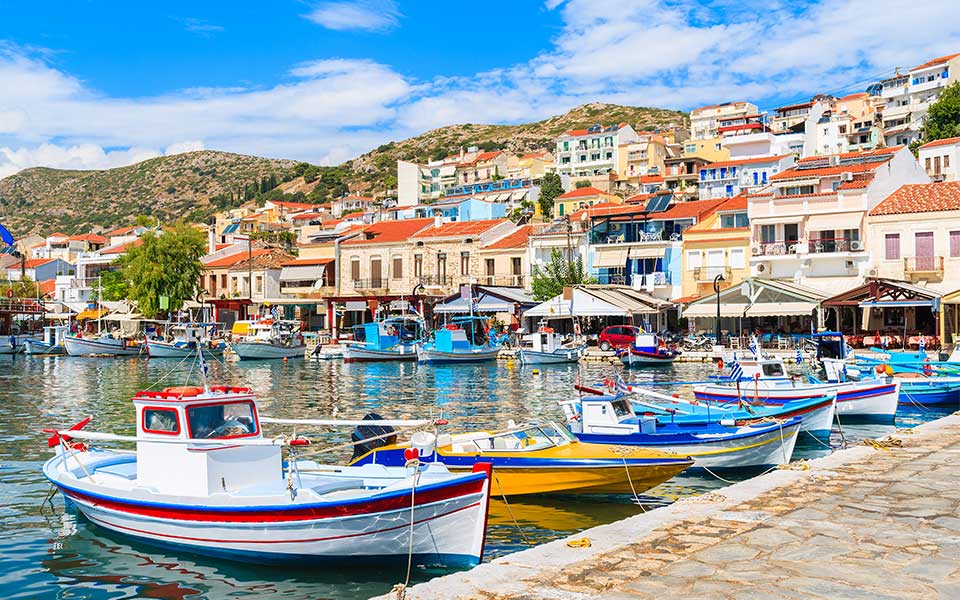
Pythagorion port
© Shutterstock
I want to go all the way to the waterfalls at Potami; it’s strange how I’ve never reached the end of this beautiful and easy trail which starts at the small Church of Metamorfoseos tou Sotiros (its dome rests on ancient columns with superb Corinthian capitals) and follows the stream inside the ravine, under the leafy plane trees.
I want to enter the Grotto of Pythagoras, on the southeastern slopes of Mt Kerki where, according to legend, the great thinker found temporary refuge from persecution from Polycrates, before leaving the island.
Once there, I want to summon the strength to climb higher, up the 320 steps leading to Panaghia Sarandaskaliotissa, the small 11th-century church which still features many of its original frescoes.
Next to the church, there’s a small cave with stalactites and stalagmites.
I want to walk along the seafront promenade of Karlovasi, shaded by the tamarisk trees, on a day when the etesian wind is blowing hard and the waves are coming all the way up onto the road.
Right down at the edge of the sea, I’ll spot the gleaming stone «throne» of the poet Yiannis Ritsos, where he would sit to enjoy the sunset on calmer days.
Your summer map to Ios: what...
From Samos to Crete, we've selected...
There’s something about Samos in summer...
While some historic buildings teeter on...